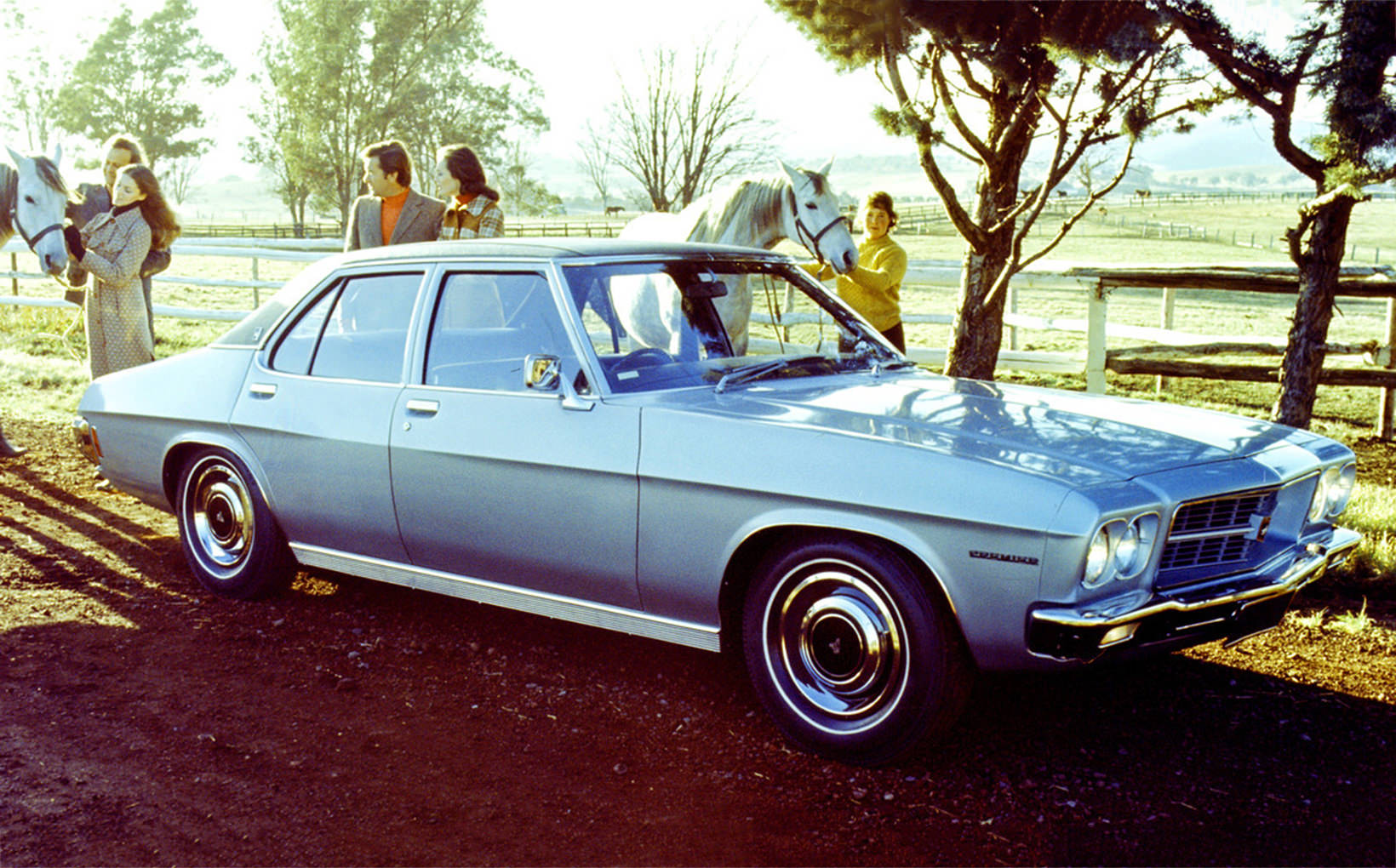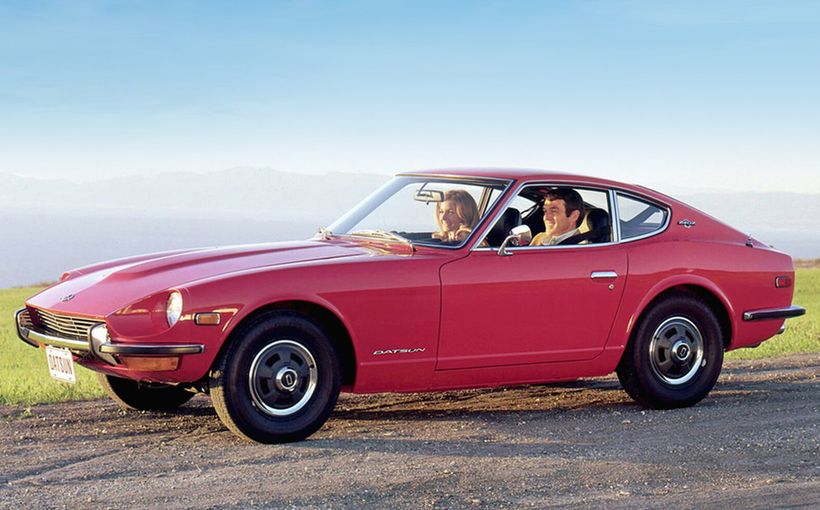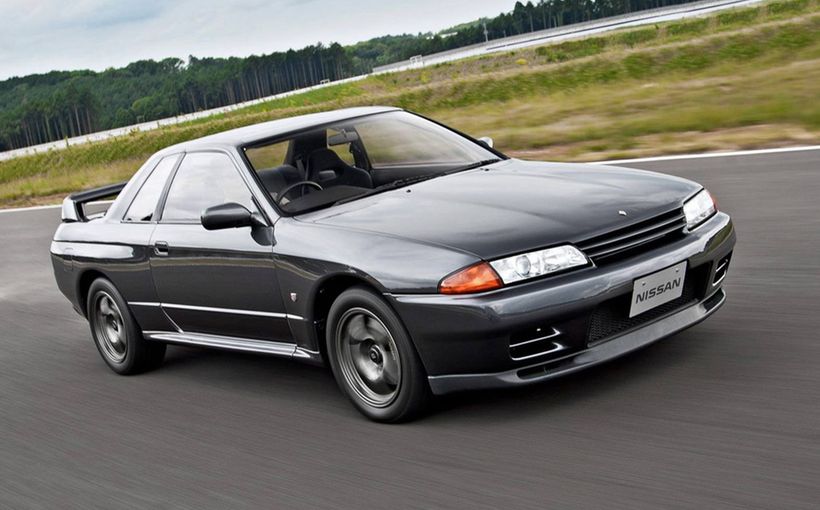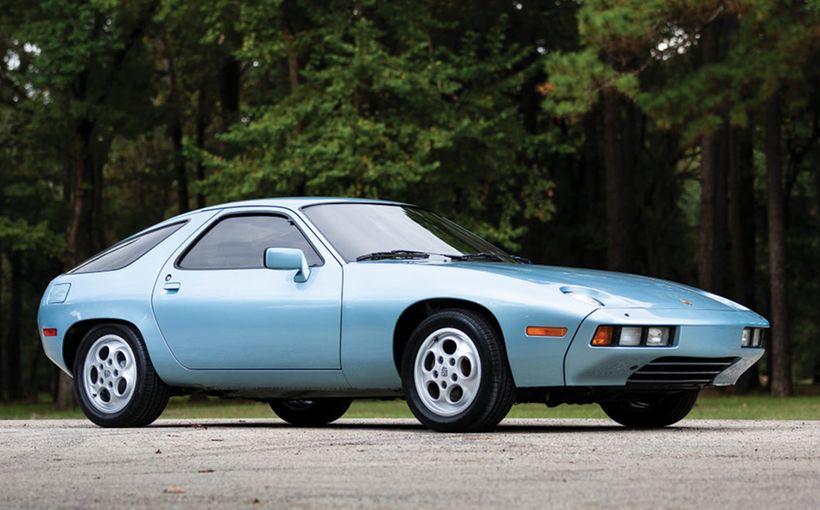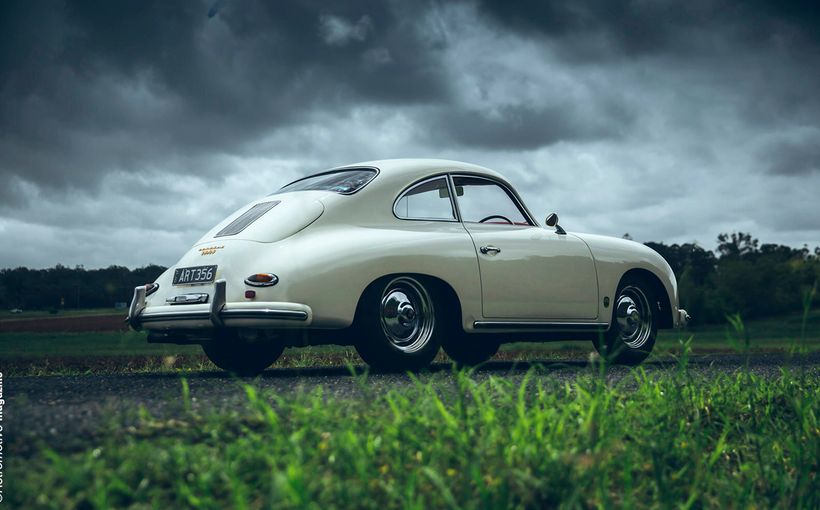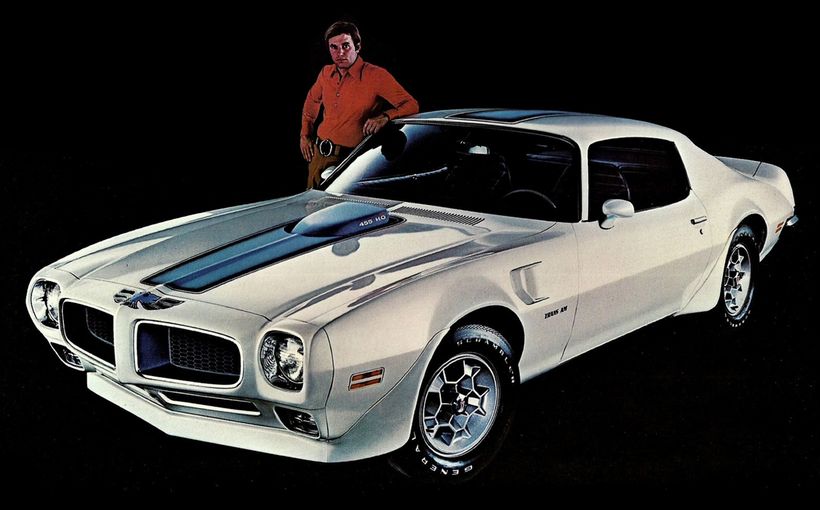Premier: The pride and prestige of Holden’s first luxury car

EJ Premier (1962-1963)
“Holden’s new concept in personal motoring” was how GM-H described its all-new Premier model in 1962. Offering unprecedented elegance and sophistication, the Premier was the flagship of Holden’s new-look EJ range which was the first to feature the clean, fresh GM styling of the 1960s.
The EJ was lower, wider, shorter and stronger than its ancestors with more interior space and superior all-round vision. However, its new styling flattered to deceive, because apart from improved duo-servo drum brakes it carried over a mechanical package little changed since the first Holden of 1948! This comprised a leisurely 138cid ‘Grey’ six, three-speed column-shift gearbox (non-synchro first gear) and Banjo diff, along with the previous EK’s three-speed Hydra-Matic option.
The appropriately named Premier, which claimed top spot above the usual Standard and Special model grades, was available only as a sedan and only with the smooth Hydra-Matic. Seductive sales brochure imagery portrayed a lavish lifestyle with lots of black-tie suits and elegant evening gowns in glamorous settings.
The Premier had exclusive rear bumper overriders and classy gold and red badges displayed on the front guards and boot, along with a chrome-plated bonnet ornament and small interior badges on the front doors. The wheels were adorned with chrome hub-caps and dress-rings paired with the latest thin-band whitewall tyres.

All images: Holden
“The interior of the new Holden Premier Sedan is rich…sumptuous…abundant with luxuries and appointments,” Holden gushed. “Nothing has been spared in terms of craftsmanship and fine materials to give you and your passengers a feeling of quality the moment you enter the car.”
This upmarket cabin featured many firsts for a Holden which rivalled prestige imported marques, highlighted by front bucket seats and a rear seat trimmed in two-tone “glove soft genuine leather”, the latter with fold-down centre armrest. Door trims were in matching two-tone.
There was also an elegant white-coloured steering wheel (very Mercedes-Benz of the era) with matching white horn buttons and gearshift/indicator knobs, full cut-pile wool carpeting with inserts in the lower door trims, chrome-plated scuff plates in each door opening, glovebox and boot courtesy lights, handbrake warning light, day/night interior mirror, two-speed windscreen wipers and electric washers, dual horns of different pitch and a ‘Warmaride’ heater/demister set in a classy centre console.

The new Premier spoiled rear passengers with ornate embossed patterns on the rear of each front seat squab along with individual ashtrays, given how sophisticated smoking was perceived in those days. All arm-rests incorporated stylish lift-up door handles.
There was a choice of four exclusive metallic ‘Magic-Mirror’ acrylic lacquer exterior colours, comprising Theatre Grey and others named after iconic Victorian locations (given head office was in Melbourne) including Euroa Gold, Hotham Blue and Wimmera Green, all with a contrasting Atherton Ivory roof. However, this standard two-tone treatment could be deleted and other non-metallic colours were available.
It was appropriate that the one millionth Holden, produced by GM-H on October 25 in 1962, happened to be a Euroa Gold/Atherton Ivory EJ Premier!

EH Premier (1963-1965)
The EH sedan and wagon range brought refreshed styling and an all-new and more powerful ‘Red’ engine in two sizes - the standard 149cid (2.4 litre) and optional 179cid (2.9 litre). After being successfully trialled in the S4 Bathurst special, a more robust three-speed column-shift manual was available with the 179 which proved a popular option.
“There’s no feeling quite like the feeling of going first class,” claimed Holden. Its flagship Premier sedan was joined by a station wagon variant and both came standard with the premium 179 and Hydra-Matic, but buyers could option the manual.
The EH Premier, like its predecessor, was identified by unique body badges and adornments including ‘wind-splitter’ chrome mouldings on the top of each front guard. However, to rationalise production complexity and cost, the door trims and leather seats were no longer two-tone and the rear of the front seat squabs did not feature the EJ’s ornate embossed patterns.
Premier buyers were again treated to a quartet of exclusive metallic paint finishes, some continuing the Victorian theme with Portsea Blue and Buller Grey. These metallics, which included Valley Mist Green and Roebuck Pearl, came standard with a contrasting Fowlers Ivory roof to create a classy two-tone effect but with similar delete options to the EJ.

HD Premier (1965-1966)
The new-look HD sedan was longer, wider and taller with more interior space and a one inch (25mm) wheelbase increase to 106 inches (2692mm). There was also a new sporty ‘X2’ option for the premium 179, with dual carburettors and a claimed output of 140bhp (104kW). Holden also finally upgraded to a modern ball-joint front suspension with the first-time option of front disc brakes.
The HD Premier sedan and wagon (above and below) came standard with the premium 179 but the column-shift manual was now standard issue, with GM’s new two-speed ‘Powerglide’ auto replacing the Hydra-Matic in a growing list of options.
These included the X2 engine along with power steering, tinted windows, power-opening wagon tailgate window, two-tone paint with additional body mouldings and a new vinyl-covered roof for sedans in black or off-white.

Bumper overriders were no longer standard but Premier gained stylish stainless-steel dress strips along the lower sills and around wheel-openings. Combined with unique wheel dressings, thin-band whitewalls and prestige badgework, it looked a cut above the Holden fleet.
The unique white steering wheel and knobs of previous models were replaced by colours that matched the interiors. GM’s harder-wearing and more practical ‘Morrokide’ vinyl also replaced the leather upholstery.
Other unique Premier touches included a new centre console that extended rearwards between the front bucket seats. This offered internal storage under a hinged and padded lid, which when closed matched the exact shape and colour of the adjoining seats. There was also a new full-black interior option – just perfect for hot Aussie summers!

HR Premier (1966-1968)
“If out-and-out luxury is your wish, bank on new Premier to grant it in lavish fashion” boasted Holden when introducing it as the flagship of the HR range, which was a pleasing facelift of the HD with a more squared-off and cleaner frontal appearance along with elegant vertical taillights.
There were also bigger engines, with the base 149 bored to 161cid (2.6 litre) and the 179 enlarged to 186cid (3.0 litre). The hottest 145bhp (108kW) dual-carb 186 X2 and its less finicky single two-barrel 186 S replacement were optional.

The Premier in sedan and wagon came standard with the new 186 and venerable column-shift manual. Transmission options included the Powerglide and two firsts: a sporty Opel four-speed floor-shift and ‘Positraction’ limited-slip diff.
New to the Premier’s interior were “rich new wood-grain finish” inserts (plastic actually) on the dash, steering wheel, centre console and door trims and revised seat patterns for the Morrokide upholstery. There was also a front bench seat offered as a no-cost option, in response to the Premier’s growing popularity with family buyers.

HK Premier (1968-1969)
“Premier makes you feel like a million dollars. At least.” Such was Holden’s lavish praise for its latest luxury offering when launched with the all-new HK Holden sedan and wagon range in January 1968. “From the front you’ll recognise Premier by its four headlights - not just two – in a full-width, one-piece grille of sparkling aluminium.”
It was promoted as the “New Generation Holden” with not only the marque’s first four-headlight model but all-new body and interior designs, significantly expanded 111-inch (2819mm) wheelbase, larger 14-inch (replacing 13-inch) wheels plus unprecedented interior space, safety features and factory options. In fact, there were now so many options, Holden claimed more than two million combinations were possible!
The HK range soon expanded to include utes and panel vans, the stunning two-door Monaro coupe and the prestigious Brougham sedan, the latter replacing the Premier as Holden’s flagship in a rushed response to Ford’s new long wheelbase Fairlane.

Big news under the bonnet was the first-time availability of eight-cylinder power, with a fully imported two-barrel 307cid (5.0 litre) Chevrolet V8 option. It was initially available only with Powerglide.
The HK Premier in sedan and wagon came standard with the 186 and three-on-the-tree manual (still with non-synchro first!) but buyers could option the hotter 186 S, new full-synchro three-speed column, four-speed floor-shift or Powerglide.
That transmission choice soon expanded to include GM’s robust ‘Saginaw’ four-speed floor-shift available across the range except Brougham, meaning the HK Premier buyer could now choose the V8 with either auto or sporty manual.

At launch, the Premier was still Holden’s top-shelf model (the Brougham was seven months away) with decorative new taillight extensions on sedans which stretched some 14-inches (356mm) onto the boot-lid on each side.
Also unique to the Premier sedan (and later Brougham) was its ‘Executive roof-line’ offering more rear seat headroom and enhanced privacy with a smaller rear window. Inside was luxurious deep-pile carpet, wood-grain dash and door-lining inserts, Morrokide upholstery with optional ‘Castillon’ nylon-weave seat inserts, numerous courtesy lights and a smorgasbord of options.
In acknowledging healthy demand from family buyers wanting seating for six, a front bench seat with fold-down centre armrest (which doubled as a third seat backrest when upright) was now standard, with bucket seats optional.

HT and HG Premiers (1969-1971)
There were new grille and taillight designs across the 1969 HT range plus a more squared-off boot-lid from the HK Brougham in sedan and coupe variants. The pronounced ‘Coke bottle’ hip line in the rear door was also reduced in profile.
Holden claimed 65 changes/improvements in the HT including better noise suppression and increased track width to improve ride and handling. Interior changes were relatively minor, but the biggest news again was under the bonnet.

There were now three V8 options comprising remaining stocks of the imported 307 plus two new engines in 253cid (4.2 litre) and premium 308cid (5.0 litre) displacements that were proudly designed and manufactured in Australia.
At launch the 308 was only available in the Brougham, but when stocks of the 307s were cleared the new 253 and 308 V8s were offered across the range, with a choice of manual or Powerglide. GM’s new Australian-made Tri-Matic three-speed auto started to replace the imported Powerglide as stocks ran dry towards the end of HT production.

The 1970 HG series, which was on sale for less than a year, was a second face-lift of the HK and essentially a stop-gap measure to formally introduce the Tri-Matic and keep Holden’s showroom stock looking fresh until the all-new HQ series replaced it in mid-1971.
The HG broke with tradition here, as every Holden until then had only produced one facelift of each body shape. Even so, the Premier differed little from its predecessor with mild revisions of the grille and interior trim, plus on sedans a thick decorative strip across the boot-lid between the tail lights creating an illusion of greater width.
Premier buyers could option the 186 S or V8s with manual or Tri-Matic. They could also be tempted to add thicker Monaro GTS 350-style power front disc brakes, a special instrument cluster with tachometer, dual exhaust systems for V8s, two-tone paint treatments and many other options.

HQ Premier (1971-1974)
“In every way, Holden Premier can be described with just one word: Quality. The firm, gentle click of its closing doors. The silence of its impeccable engines. Uncompromising quality in design and construction. And whether sedan or wagon, it looks what it is. Luxurious motoring.”
That’s how GM-H portrayed the Premier (above) when launching its all-new HQ range in 1971. It was the most significant Holden range since the original 48-215, as it represented the greatest Australian input in design and local content.
It also boasted the largest choice of body styles to date, the greatest number of regular model variants across three wheelbases, all-new exterior styling, four-coil suspension, brakes and a bold new interior design with, for the first time in a Holden, flow-through cabin ventilation.
Sedans maintained a 111-inch wheelbase but wagons, utes and vans moved to a longer 114-inch (2896mm) dimension. This was shared with the new Statesman prestige model, which replaced the Brougham as the company’s luxury flag-bearer.

The venerable 186 had been replaced by the “effortless whisper” of an enlarged 202cid (3.3 litre) version which with column manual was the Premier’s standard drivetrain, but buyers could option V8 power with mandatory front disc brakes.
A new locally-made 'Aussie' four-speed gearbox replaced the imported Opel/Saginaw units, spoiling Premier buyers for choice with optional four-speed floor-shift or the Tri-Matic with column or T-bar floor-shift.
The Premier brought its usual upmarket elegance with four headlights, lower-sill trim strips, chrome hub-caps and wheel trims with thin-band whitewalls and unique badgework. Optional vinyl roofs in a choice of three colours enhanced the sedan’s luxurious appearance.
Inside was thick loop-pile carpet, a new instrument fascia with burl walnut-finish and bench seats with fold-down centre armrests and seating for six, but buyers could opt for reclining front buckets with “cool, luxurious Raydo cloth” inserts, plus many other options.
There was also a limited edition (1500 units) 25th Anniversary Premier released in 1973 to celebrate the orginal 48-215 Holden's 25th birthday. Available only with the 202 six and Trimatic, it was finished in an exclusive metallic silver with matching ash-coloured vinyl roof and upholstery plus unique accessories.

HJ Premier (1974-1976)
“Holden Premier with a touch of class” was how GM-H introduced the first facelift of the HQ with a more squared-off and imposing frontal appearance inspired by larger contemporary US cousins. The steel bumpers also sat proud of the bodywork to reduce damage in low-speed collisions, which combined with the styling changes increased the vehicle’s length.
Standard wheelbase HJ sedans also had a new taillight design incorporated in the rear quarter-panel plus side-body protective mouldings, standard front disc brakes on higher-spec models and a new dashboard design.
GM’s heavy-duty Turbo-Hydramatic 400 was now exclusive to the top-of-the-range 308 V8. The 173 and 202 sixes were respectively renamed 2850 and 3300 in response to Australia’s new metric measurement of displacement in cubic centimetres, while the 253 and 308 V8s became the 4.2 litre and 5.0 litre.

The HJ Premier retained the 3300 six but now with column-shift Tri-Matic as the standard transmission. Upgrading to V8 power was a tempting option along with new variable-intermittent wipers, a vacuum-operated remote boot release or factory-installed sliding-metal sunroof.
The Premier sedan and wagon switched from separate chrome hub-caps/dress-rims to full-wheel covers. There were also new teak timber-grain highlights, a remote-control driver’s exterior mirror and standard front bucket seats returned for the first time since the HR, separated by a matching console with internal storage and a padded lid that doubled as an armrest.

HX Premier (1976-1977)
There were only minor styling revisions for the second facelift of the HQ body. However, the HX (above) brought improvements in noise isolation and ride quality, along with a multi-function steering column stalk to control all headlight, windscreen wiper/washer and indicator functions.
From the first day of July in 1976 the HX switched to revised versions of its sixes and V8s codenamed XT4, which were modified to meet tougher federal emission laws mandated under new ADR27A legislation.
“There’s something else we’ve built into Premier which you’ll discover for yourself – the good things it says about you.” In other words, everyone will be impressed with your discerning choice of car. However, it’s also sobering to note that it took until the 1976 HX range for the Premier to finally be fitted with an AM radio as standard equipment!

HZ Premier (1977-1980)
The HZ (above) represented an unprecedented third facelift of a single Holden body style yet it looked far from outdated for its time, which highlighted how advanced the HQ’s styling was in 1971. The HZ’s cosmetic changes were minor, with a new ‘egg-crate’ style grille and adoption of the Statesman's boot-lid to create a more formal and distinctive look for most models. There were also revised wheel covers, body mouldings and badges.
The biggest change was new Radial Tuned Suspension (RTS), which was a significant and long-overdue active safety advance that brought sharper European-style handling response and roadholding across the Holden fleet. Rear disc brakes were also a first-time option.
The 3300 six was renamed the 3.3 litre and from May 1979 a Turbo-Hydramatic 350 auto replaced the TH 400 behind the premium 5.0 litre V8.
“You’ll find this is our most completely-equipped Premier ever. Designed by people who thought things out before they put things in.” For the first time the Premier’s standard engine was a V8, in this case the smooth and torquey 4.2 litre paired with a T-bar auto. The 3.3 litre six and 5.0 litre V8 could also be optioned, along with a four-speed floor-shift.

New standard Premier appointments included chrome mouldings around the wheel openings, variable-ratio power steering, tinted windows and a rear window demister. So, an HZ Premier equipped with the brilliant new RTS could be optioned with a 5.0 litre V8, Turbo 350 auto or four-speed manual, four-wheel disc brakes and LSD - that would have been quite a car!
However, reaching that pinnacle in luxury, handling and performance was bitter-sweet, as the HZ was also the last Premier. The world’s first oil shock, triggered by hostilities in the Middle East, prompted a general product downsizing across the global car industry in the 1970s. As a result, the success of Holden’s more compact and fuel-efficient Commodore launched in 1978 ensured the demise of Holden’s traditional family sedan and wagon range by 1980.
The Premier, like its Kingswood stablemate, went with it, but its legacy as a much-loved Australian motoring icon will endure.

